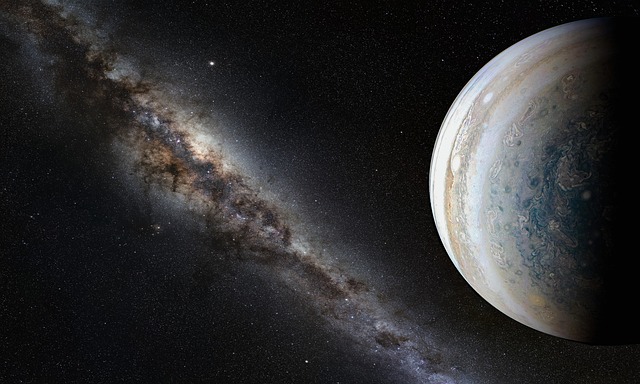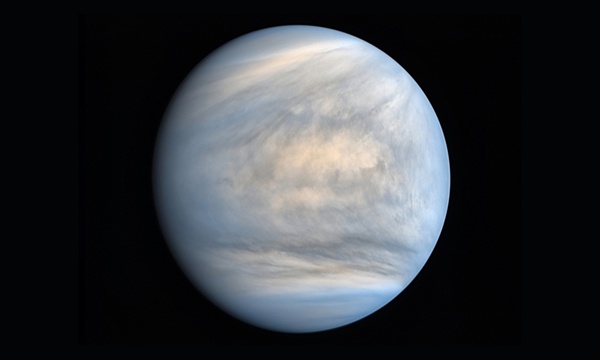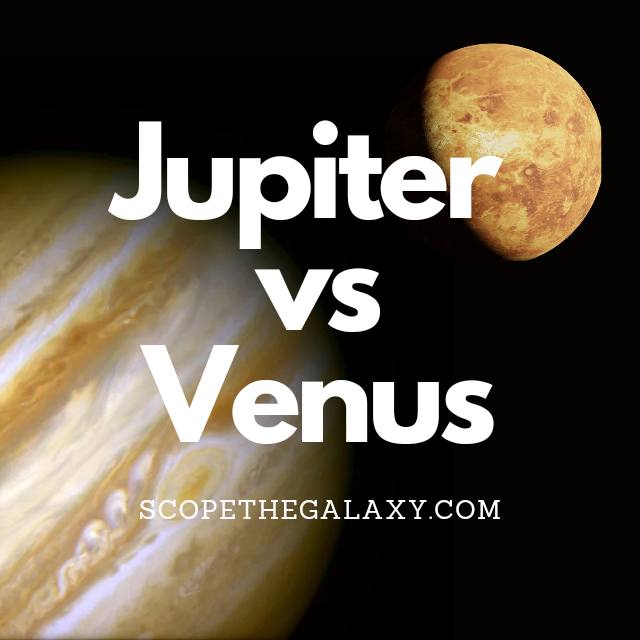*This post may contain affiliate links. This means we may make a commission if you purchase an item using one of our links*
The main differences between Jupiter and Venus is that Jupiter is the 5th farthest planet from the Sun, the largest planet in our solar system, has the strongest magnetic field in the solar system and has 79 moons whilst Venus has 0 moons, is the 2nd closest planet to the Sun, is both the hottest and brightest planet and has a day that takes 243 which is even longer than its 225 day orbital cycle unlike Jupiter’s 10 hours.
There are numerous other differences and even the odd few similarities between the two so, continue reading if want a more thorough outline of the variety of other features that differentiates Jupiter and Venus from each other.
What Is The Planet Jupiter?
Table of Contents

Jupiter is the 5th farthest planet from the Sun and the largest planet within our local solar system. The planets most recognizable trait is the giant red spot visible on its atmosphere along with the brown horizontal bands flowing across its atmosphere.
As a result of its composition and size, Jupiter falls under the classification of a gas giant.
This is because its composition mostly consists of the elements hydrogen and helium. The split is roughly 71% hydrogen, 27% helium, with the remainder of the elements split throughout the left over 2%.
As the biggest planet in our solar system, Jupiter is 139,820 km or 1,300 Earths in diameter, it has a mass of around 0.001 solar masses, the temperature when inside the clouds are roughly -145 degrees Celsius whilst the core is far hotter, equating in the region of 24,000 degrees Celsius.
Due to its extreme circumstances, gaseous composition and distance from the Sun, the planet is not theoretically capable to support life, from its subzero temperature to the extremely fast 640 km/h winds, and its gravity which may be unsustainable for our bones, roughly 2.4 times greater than Earth’s.
Although the conditions on Jupiter aren’t suitable for us, some of its 79 moons like Europa for example could support life.
This brown giant has a relatively fast rotation around its axis where 1 rotation typically takes 10 hours to make whilst its orbit around the Sun is far longer taking in the region of 12 years for 1 full cycle.
Another feature of Jupiter that is renowned by astronomers is the strength of its magnetic field. In comparison to the other planets in our solar system it is even stronger than our Sun, where it’s over magnetosphere is roughly 20,000 times the strength of Earth.
What this means is that Jupiter’s magnetosphere is able to avert solar winds that are 3 million kilometers away from it.
What Is The Planet Venus?

Venus is the 2nd closest planet to the Sun and is often regarded as Earth’s sister planet. It’s very close to our Earth in size where its diameter is 12,104km. This is just over 600km less wide than our home planet.
Unlike all the planets further outside the Sun’s orbit, Venus and even Mercury have no moons orbiting it. The most probable reason for this is due to its closer proximity to it, which means that smaller objects orbit the Sun as opposed to Venus.
Venus is also the hottest planet in our solar system where its surface temperature is 475 degrees Celsius. This is due to a number of factors, like the thicker atmosphere, close proximity to Sun, the reasons for which have been explained in more detail here.
It’s core is hot too, similar to that of the ice giants and Earth, where it stands at 5,200 degrees Celsius.
As a result of this thicker atmosphere, Venus is also able to reflect a lot more of the light the Sun projects at it, making it both the hottest and brightness planet in our solar system. This is why for the longest time, and even till this day Venus is often referred to as the morning or evening star.
The thicker atmosphere is mostly compromised of carbon dioxide, and thick clouds of sulfuric acid. This does result sulfuric acid rain on the planets surface, which of course is very corrosive.
Being so close to the Sun also mean its orbital cycle is much shorter. It takes Venus 225 days to complete a full cycle, on the contrary a single day is actually longer than this where it takes around 243 days for a full rotation around its axis.
This is partially down to its distance from the Sun and the thick atmosphere surrounding this terrestrial planet. The axial tilt on Venus is also different from the other planets in our solar system where it is practically straight at 3 degrees.
All in all this is certainly one of the most interesting planets in our solar system and in many peoples eyes, could very well have supported life in the past based on how close its shape and size is to that of Earth.
Similarities Between Jupiter And Venus
Although Jupiter and Venus don’t share too much in common, there are still a few things these they do share. They would include the below:
- Both planets are orbiting the Sun in a circular pattern
- Both have a hotter central core.
- Both are a spherical in shape.
- Both have an axial tilt around 3 degrees.
Differences Between Jupiter And Venus
In regards to the differences between these two, they include the following:
- Jupiter has 4 rings whilst Venus has 0
- Jupiter has 79 moons whilst Venus has 0.
- Venus is smaller with a diameter of 12,104km whereas Jupiter’s diameter is 139,820km. In essences just under 1,400 Venus sized planets could fit inside Jupiter.
- It takes Jupiter 12 years to orbit the Sun whereas Venus does so in 225 days.
- Venus is the hottest planet in the solar system with a surface temperature of around 475 degrees Celsius whilst Jupiter’s temperature is around -145 degrees Celsius.
- In regards to core temperature Venus’ core is 5,200 degrees and Jupiter’s is around 24,000.
- Jupiter has the strongest magnetic field in our solar system which stands at 4.3 gauss whilst Venus has a gauss rating around 10 times smaller than Earth’s which would make it around 0.025 – 0.065 gauss and practically non-existent.
- Venus is the brightest entity in our solar system as its atmosphere reflects around 70% of the Sun’s rays.
- Jupiter is a dark and light brown color whilst Venus is a yellowy white color.
- Venus has a mass of 4.867 × 10^24 kg whereas Jupiter’s mass is 1.89813 × 1027 kg.
- One day on Venus takes even longer than its orbit around the Sun, taking roughly 243 days whilst Jupiter completes a cycle in 10 hours.
- Jupiter is a gas giant whilst Venus is a terrestrial planet.
Summary
Jupiter and Venus are both planets that rank first in a number of areas within our solar system. Venus is the hottest, brightest and even has the longest days whilst Jupiter is the biggest and has a magnetic field even stronger than our Sun.
They vary quite significantly from one another as a result of these differences, so just because they are part of the same solar system doe not mean they have too many commonalities, which of course has been broken down in more detail in the sections above.

